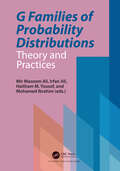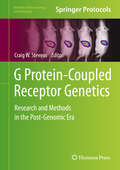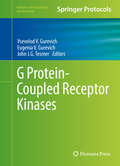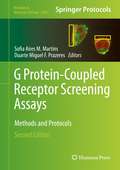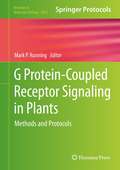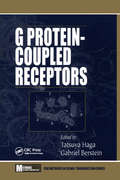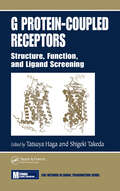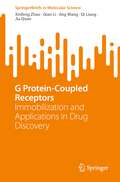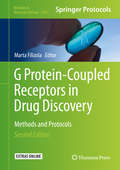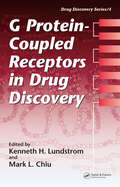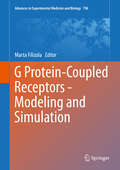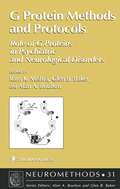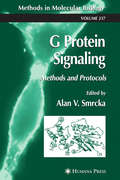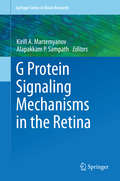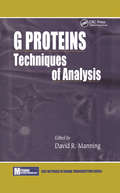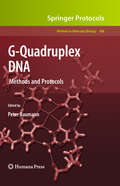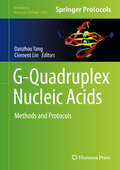- Table View
- List View
Fy Nodiadau Adolygu: CBAC TGAU Cemeg (My Revision Notes: WJEC GCSE Chemistry, Welsh-language Edition)
by Adrian Schmit Jeremy PollardTarget success in Science with this proven formula for effective, structured revision; key content coverage is combined with exam-style tasks and practical tips to create a revision guide that students can rely on to review, strengthen and test their knowledge.With My Revision Notes, every student can:- Plan and manage a successful revision programme using the topic-by-topic planner- Consolidate subject knowledge by working through clear and focused content coverage- Test understanding and identify areas for improvement with regular 'Now Test Yourself' tasks and answers- Improve exam technique through practice questions, expert tips and examples of typical mistakes to avoid- Get exam ready with extra quick quizzes and answers to the practice questions available online
Fy Nodiadau Adolygu: CBAC TGAU Ffiseg (My Revision Notes: WJEC GCSE Physics, Welsh-language Edition)
by Jeremy PollardTarget success in Science with this proven formula for effective, structured revision; key content coverage is combined with exam-style tasks and practical tips to create a revision guide that students can rely on to review, strengthen and test their knowledge.With My Revision Notes, every student can:- Plan and manage a successful revision programme using the topic-by-topic planner- Consolidate subject knowledge by working through clear and focused content coverage- Test understanding and identify areas for improvement with regular 'Now Test Yourself' tasks and answers- Improve exam technique through practice questions, expert tips and examples of typical mistakes to avoid- Get exam ready with extra quick quizzes and answers to the practice questions available online
Fy Nodiadau Adolygu: CBAC TGAU Gwyddoniaeth Dwyradd (My Revision Notes: WJEC GCSE Science Double Award, Welsh-language Edition)
by Adrian Schmit Jeremy PollardTarget success in Science with this proven formula for effective, structured revision; key content coverage is combined with exam-style tasks and practical tips to create a revision guide that students can rely on to review, strengthen and test their knowledge.With My Revision Notes, every student can:- Plan and manage a successful revision programme using the topic-by-topic planner- Consolidate subject knowledge by working through clear and focused content coverage- Test understanding and identify areas for improvement with regular 'Now Test Yourself' tasks and answers- Improve exam technique through practice questions, expert tips and examples of typical mistakes to avoid- Get exam ready with extra quick quizzes and answers to the practice questions available online
Fy Nodiadau Adolygu (My Revision Notes: Wjec Gcse Chemistry Welsh Edition Epub
by Jeremy Pollard Adrian SchmitTarget success in Science with this proven formula for effective, structured revision; key content coverage is combined with exam-style tasks and practical tips to create a revision guide that students can rely on to review, strengthen and test their knowledge.With My Revision Notes, every student can:- Plan and manage a successful revision programme using the topic-by-topic planner- Consolidate subject knowledge by working through clear and focused content coverage- Test understanding and identify areas for improvement with regular 'Now Test Yourself' tasks and answers- Improve exam technique through practice questions, expert tips and examples of typical mistakes to avoid- Get exam ready with extra quick quizzes and answers to the practice questions available online
Fylling's Illustrated Guide to Nature in Your Neighborhood
by Marni FyllingThe acclaimed author and science illustrator presents an engaging and enlightening guide to the bizarre and surprising wildlife all around us.In the same lighthearted yet scientifically accurate style of Fylling’s Illustrated Guide to Pacific Coast Tide Pools, this compact guidebook reveals the splendidly strange animals and plants just outside your door. Marni Fylling’s full-color illustrations make species identification a snap, and concise descriptions include fascinating (and sometimes grotesque) factoids about frequently encountered plants, insects, arachnids, birds, and mammals. With Fylling’s guidance, the everyday becomes extraordinary: Pigeons share nest-building and egg-sitting duties, and mate for life—with occasional dalliances; squirrel teeth grow about six inches per year; spiders owe their characteristic creep to their “hydraulic” legs; poison oak and poison ivy’s itch-inducing oil is also found in pistachios, cashews, and mangoes; and much, much more.
G. Evelyn Hutchinson and the Invention of Modern Ecology
by Nancy G. SlackStephen J. Gould declared G. Evelyn Hutchinson the most important ecologist of the twentieth century. E.O. Wilson pronounced him "one of the few scientists who could unabashedly be called a genius." In this fascinating book, Nancy G. Slack presents for the first time the full life story of this brilliant scientist who was also a master teacher, a polymath, and a delightful friend and correspondent. Based on full access to Hutchinson's archives and extensive interviews with him and many who knew him, the author evaluates his important contributions to modern ecology and his profound influence as a mentor. Filled with information available nowhere else, the book draws a vibrant portrait of an original scientific thinker who was also a man of remarkable personal appeal.
G Families of Probability Distributions: Theory and Practices
by Mir Masoom Ali Irfan Ali Haitham M. Yousof Mohamed IbrahimStatistical distributions are essential tools to model the characteristics of datasets, such as right or left skewness, bi-modality or multi-modality observed in different applied sciences, such as engineering, medicine, and finance. The well-known distributions like normal, Weibull, gamma and Lindley are extensively used because of their simple forms and identifiability properties. In the last decade, researchers have focused on the more complex and flexible distributions, referred to as Generalized or simply G families of probability distributions, to increase the modelling capability of these distributions by adding one or more shape parameters.The main aim of this edited book is to present new contributions by researchers in the field of G families of probability distributions. The book will help researchers to: Develop new univariate continuous and discrete G families of probability distributions. Develop new bivariate continuous and discrete G families of probability distributions. Derive beneficial mathematical properties such as ordinary and incomplete moments, moment generating functions, residual life and reversed residual life functions, order statistics, quantile spread ordering and entropies, and some bivariate and multivariate extensions of the new and existing models using a simple-type copula.
The G.O.D. Experiments: How Science Is Discovering God in Everything, Including Us
by Gary E. Schwartz William L. SimonDOES GOD EXIST ONLY IN OUR HEARTS? According to highly esteemed scientist Gary E. Schwartz, Ph. D. , there is compelling scientific evidence that we no longer have to accept God on faith alone. Through a multidisciplinary approach, Harvard University-educated Dr. Schwartz blends psychology, quantum physics, and mathematics to examine the science of spirit. Faith and science are not mutually exclusive, and a better understanding of their relationship can lead us to recognize how God operates in everything. Trained in the scientific method as an "open-minded skeptic," Dr. Schwartz was taught how to raise questions, turn them into hypotheses, and design experiments to test them. He was not trained to consider the nature of God. And yet, his scientific research led him directly to the discovery of God's existence in intelligent evolution and everyday life. Scientifically rigorous and spiritually reassuring, this eye-opening book is a wake-up call for anyone who wonders about life's true meaning and who longs to believe in the existence of a universal intelligence.
G Protein-Coupled Receptor Genetics
by Craig W. Stevens"G Protein"" ""Coupled Receptor Genetics: Research and Methods in the Post"" ""Genomic Era" features practical techniques inspired by the fast moving GPCR field. From powerful bioinformatic tools tracing the evolution of GPCRs, to methods for the cellular transfection of engineered viruses containing GPCRs, to optogenetic techniques that produce light-activated GPCRs in live mice, what was once science fiction is now science fact. This detailed volume includes sections covering genetic mechanisms, a genetic toolbox for GPCR discovery, as well as genetic aspects of G protein-coupled receptors in health and medicine. Written for the "Methods in Pharmacology and Toxicology" series, this book contains the kind of key implementation advice that encourages successful results in the lab. Authoritative and easy to use, "G Protein"" ""Coupled Receptor Genetics: Research and Methods in the Post"" ""Genomic Era" serves as an ideal guide for researchers aiming to continue our progress in this dynamic and exciting area of study. "
G Protein-Coupled Receptor Kinases
by Vsevolod V. Gurevich Eugenia V. Gurevich John J.G. TesmerThis collection explores up-to-date descriptions of known G protein-coupled receptor kinase (GRK)-dependent mechanisms, both associated with G protein-coupled receptor (GPCR) functions and the receptor-independent. The chapters cover a wide range of studies from invertebrates to humans, with sections of the volume covering GRK structure, mechanisms of activation, and interaction with GPCRs, GRKs in cell signaling, as well as physiological and pathophysiological mechanisms regulated by GRKs. Written for the "Methods in Pharmacology and Toxicology" series, this book features the kind of practical detail necessary for success in the laboratory. Authoritative and timely, "G Protein-Coupled Receptor Kinases" features the kind of comprehensive mechanistic elucidation of GRK functions and their regulation in cells necessary for a better understanding of cell biology as well as for devising novel research approaches and therapeutic strategies.
G Protein-Coupled Receptor Screening Assays: Methods and Protocols (Methods in Molecular Biology #2268)
by Duarte Miguel F. Prazeres Sofia Aires M. MartinsThis fully updated edition targets not only those assays directly involved in the discovery of GPCR-active compounds but also those involved in cell-based experiments designed to study physiological responses. Whether coming from academia or industry, or being an experienced researcher or a newcomer to the field, the reader will find accessible methods and protocols that cover the latest developments on receptor purification, molecular biology, recombinant engineering, and analytical techniques that enable the real time monitoring of the complex GPCR signaling cascade and identification of potential drug targets. Written for the highly successful Methods in Molecular Biology series, chapters include introductions to their respective topics, lists of the necessary materials and reagents, step-by-step, readily reproducible laboratory protocols, and tips on troubleshooting and avoiding known pitfalls. Authoritative and up-to-date, G Protein-Coupled Receptor Screening Assays: Methods and Protocols, Second Edition aims to provide the tools necessary to contribute to the advancement of GPCR research and discovery and ultimately lead to the availability of innovative and more efficient drugs.
G Protein-Coupled Receptor Signaling in Plants: Methods and Protocols
by Mark P. RunningRemarkably, while G protein-coupled receptors (GPCRs) are highly prevalent in animals and yeast, very few candidate GPCRs have been identified in plants. In G Protein-Coupled Receptor Signaling in Plants: Methods and Protocols, experts in the field describe techniques used in the study of small GTPases and related proteins. Beginning with a chapter on bioinformatics approaches for GPCR discovery, this detailed volume continues with chapters on heterotrimeric G protein subunits, Rab-GTPases, as well as lipid modifications, including myristoylation, acylation, and prenylation. Written in the highly successful Methods in Molecular Biology series format, chapters include introductions to their respective topics, lists of the necessary materials and reagents, step-by-step, readily reproducible laboratory protocols, and tips on troubleshooting and avoiding known pitfalls. Practical and dependable, G Protein-Coupled Receptor Signaling in Plants: Methods and Protocols aims to aid further studies into the roles of small GTPases which will help elucidate numerous key processes in plants.
G Protein-Coupled Receptors: Structure, Function, And Ligand Screening (Methods in Signal Transduction Series)
by Tatsuya Haga Gabriel BersteinCovering recently developed methods in membrane-bound receptors, this book emphasizes receptor structure and function, knowledge of which is essential to the study of signal transduction.G Protein-Coupled Receptors has culled contributors from domestic and international sources, providing a broad base of knowledge. Some topics covered are the r
G Protein-Coupled Receptors: Structure, Function, and Ligand Screening
by Tatsuya Haga Shigeki TakedaThis book provides a broad base of knowledge of G-protein-coupled receptors. Useful at both the university and industrial levels, this book is of particular interest to those who are developing therapeutic approaches to diseases using drugs that influence receptor activation.
G Protein-Coupled Receptors: Immobilization and Applications in Drug Discovery (SpringerBriefs in Molecular Science)
by Xinfeng Zhao Qian Li Jing Wang Qi Liang Jia QuanThis book summarizes the progress made to functional immobilize G protein-coupled receptors (GPCRs) through site-specific or orientated recognition in both non-covalent and covalent manners. The last decade is the dawn of the “post-structural biology” era for G protein-coupled receptor research. As an emerging approach for state-of-the-art immobilization, this book discusses efforts to explore the elegance of naturally-occurring biochemical reactions by using their high specificity and robust reactivity in the complex system, such as site-specific conjugation by covalent recognition between enzymes and their substrates. With the perspective of protein-drug interactions, this book also reviews the applications of protein immobilization, with an emphasis on G protein-coupled receptors, in drug discovery and protein-ligand interaction analysis. In addition, the merits, opportunities and disadvantages are analyzed for different immobilization methods, and a perspective for future directions is presented. Given its scope, this book appeals to a broad readership, particularly researchers engaged in the field of analytical chemistry, bioconjugate chemistry, and chemical biology, and other related field, as well as teachers of relevant majors in colleges and universities.
G Protein-Coupled Receptors in Drug Discovery
by Marta FilizolaThis detailed volume provides an overview of recent techniques employed in the field of G protein-coupled receptors (GPCRs) to screen for new drugs and to derive information about their receptor structure, dynamics, and function for the purpose of developing improved therapeutics. Owing to remarkable recent advances in the structural, biophysical, and biochemical analyses of these receptors, as well as a growing body of evidence hinting at the possible relevance of allosteric modulators, biased agonists, and oligomer-selective ligands as improved therapeutic agents, drug discovery for GPCRs has recently taken a completely new direction. For this book, expert contributors have shared their protocols and views on the impact of these methodologies on modern drug discovery. Written for the highly successful Methods in Molecular Biology series, chapters include introductions to their respective topics, lists of the necessary materials and reagents, step-by-step, readily reproducible laboratory protocols, and tips on troubleshooting and avoiding known pitfalls. Practical and fully updated, G Protein-Coupled Receptors in Drug Discovery: Methods and Protocols, Second Edition serves as an ideal guide for a diverse audience from structural and molecular biologists to pharmacologists and drug designers who wish to explore this extensive class of key drug targets. --
G Protein-Coupled Receptors in Drug Discovery
by Kenneth H. Lundstrom Mark L. ChiuThe broad range of G protein-coupled receptors (GPCRs) encompasses all areas of modern medicine and have an enormous impact on the process of drug development. Using disease-oriented methods to cover everything from screening to expression and crystallization, G Protein-Coupled Receptors in Drug Discovery describes the physiological roles of GPCRs
G Protein-Coupled Receptors - Modeling and Simulation
by Marta FilizolaG protein-coupled receptors (GPCRs) are heptahelical transmembrane receptors that convert extra-cellular stimuli into intra-cellular signaling, and ultimately into biological responses. Since GPCRs are natural targets for approximately 40% of all modern medicines, it is not surprising that they have been the subject of intense research. Notwithstanding the amount of data generated over the years, discovering ligands of these receptors with optimal therapeutic properties is not straightforward and has certainly been hampered for years by the lack of high-resolution structural information about these receptors. Luckily, there has been a steady increase of high-resolution crystal structures of these receptors since 2007, and this information, integrated with dynamic inferences from computational and experimental methods, holds great potential for the discovery of new, improved drugs. This book, which provides, for the first time, state-of-the-art views on modeling and simulation of GPCRs, is divided into 4 parts. In the first part, the impact of currently available GPCR crystal structures on structural modeling is discussed extensively as are critical insights from simulations in the second part of the book. The third part reports recent progress in rational ligand discovery and mathematical modeling, whereas the fourth part provides an overview of bioinformatics tools and resources that are available for GPCRs.
G Protein Methods and Protocols
by Ram K. Mishra Alan A. Boulton Glen B. BakerCombining the cutting-edge insights of leading basic and clinical investigators, G Protein Methods and Protocols provides both critical reviews and detailed protocols for studying the medical role played by G proteins and cellular signaling in psychiatric and neurological disease. The mental and neurological disorders covered range from Parkinson's disease and schizophrenia to manic depression, drug addiction, and mood and anxiety disorders.
G Protein Signaling
by Alan V. SmrckaA collection of cutting-edge methods for investigating G protein signaling from a variety of perspectives ranging from in vitro biochemistry to whole animal studies. Among the readily reproducible techniques presented are those for the purification of G proteins and effectors enzymes, assays of these purified G proteins and effector enzymes, and for the study of G proteins interactions with effectors in intact cells. Additional methods are provided for assaying G protein coupled receptor structure, function, and localization; for studying the physiological roles for endogenous G proteins; and for examining lipid and phosphate modifications of RGS proteins.
G Protein Signaling Mechanisms in the Retina
by Kirill A. Martemyanov Alapakkam P. SampathThe main purpose of this volume is to provide a focused analysis of the function of the G protein-coupled signaling pathways that operate in the interconnected network of retinal neurons as they detect and encode the information carried by light. The organization of this volume will generally follow the path of signal flow in the retina. First we will describe recent advances in understanding the phototransduction cascade of rod and cone photoreceptors, which use signaling cascade based on the GPCR rhodopsin to transduce incident light into neural activity Chapters will be devoted to unique specializations of the two major types of photosensitive cells that comprise the predominant input for our spatial and color vision Subsequently, the mechanisms of synaptic information encoding by retinal ON bipolar cells will be described, where the GPCR mGluR6 plays a fundamental role Chapters in this section will examine macromolecular organization of the mGluR6 signaling pathway as well as current understanding of its function. The functional characteristics of this signaling mechanism will be explored in detail. Additionally, this section will cover the role of dopamine receptors in modulating signal transmission between photoreceptors and ON-bipolar cells. Finally, chapters will be focused on the output neurons of the inner retina, ganglion cells, where the components of the emerging GPCR melanopsin cascade in intrinsically photosensitive ganglion cells will be detailed. Collectively these mechanisms allow the retina to represent visual space over a wide range of light intensities.
G ProteinsTechniques of Analysis (Methods in Signal Transduction Series)
by David R. ManningIncorporating a bench-top format, G Proteins: Techniques of Analysis covers essential methods - with a commitment to those techniques of proven and current utility. It offers an in-depth description of protocols, together with theory and representative data. It includes expression and functional analysis of G proteins; evaluation of covalent modifications and other regulatory phenomena; and, mapping pathways established among receptors, G proteins, and effectors. Incorporating contributors from key institutions, each contributor offers clear instructions to establish a synthesized, concise and consistent approach to each chapter, which is beneficial to both students and professionals.
G-Quadruplex DNA
by Peter BaumannRecent work has revealed that stabilizing G-quadruplexes in telomeric DNA inhibits telomerase activity, providing impetus for the development of G-quartet-interacting drugs, while G-quartet-containing oligonucleotides have been recognized as a potent class of aptamers effective against STAT3 and other transcription factors implicated in oncogenesis, proving these guanine-quartets to be a vital and rich area for future study. In "G-Quadruplex DNA: Methods and Protocols", experts in the field present a collection of detailed techniques for studying G-quartet formation, dynamics, and molecular recognition. Written in the highly successful Methods in Molecular BiologyTM series format, chapters include brief introductions to their respective topics, lists of the necessary materials and reagents, step-by-step, readily reproducible laboratory protocols, and notes on troubleshooting and avoiding known pitfalls. Authoritative and cutting-edge, "G-Quadruplex DNA: Methods and Protocols "promises to be a useful resource for those familiar with G-quartets as well as an easy entry point for those researchers from diverse fields who are just developing an interest in the exciting implications of G-quadruplex DNA.
G-Quadruplex Nucleic Acids: Methods and Protocols (Methods in Molecular Biology #2035)
by Danzhou Yang Clement LinThis volume covers the structures, properties, and functions of G-quadruplexes in a wide range of biological disciplines, including therapeutic intervention and biomaterial application. The chapters in this book explore a wide range of vital and new experimental techniques used in the study of G-quadruplexes. Written in the highly successful Methods in Molecular Biology series format, chapters include introductions to their respective topics, lists of the necessary materials and reagents, step-by-step, readily reproducible laboratory protocols, and tips on troubleshooting and avoiding known pitfalls. Practical and cutting-edge, G-Quadruplex DNA: Methods and Protocols is a valuable resource for both novice and experienced researchers who work in biophysics, structural biology, computational biology, biochemistry, and molecular and cell biology, and who want to learn more about the potential roles and effects of G-quadruplex in these fields.
G. V. Schulz: Leben und Forschen eines Polymer-Pioniers im 20. Jahrhundert
by Sebastian SeiffertProf. Dr. Günther Viktor Schulz, ein bedeutender Wissenschaftler des 20. Jahrhunderts, prägte ganz wesentlich das Gebiet der Polymerchemie. Sein Leben und Wirken in den Wirren dieser Epoche war erfüllt von wissenschaftlichen Entdeckungen und schicksalhaften Begegnungen. Das vorliegende Werk stellt eine private Niederschrift seiner persönlichen Lebens- und Arbeitserinnerungen bereit.





